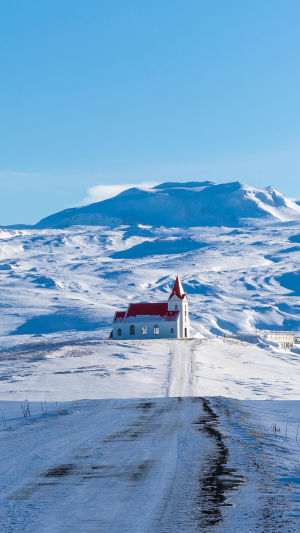Iceland’s dramatic landscapes and serene vistas offer a unique experience for winter travelers. Picture icy roads leading to snow-covered mountains, vast open fields, and quiet moments of reflection.
For Lykkers seeking a memorable winter getaway, Iceland offers a blend of untouched nature, geothermal wonders, and northern beauty that appeals to adventurers and nature lovers alike.
<h3>Highlights and Must-Visit Spots</h3>
<b>1. Jokulsarlon Glacier Lagoon</b>
This stunning glacial lake, dotted with blue and white icebergs, is a must-see for anyone visiting Iceland. Located about five hours from Reykjavik, Jokulsarlon Lagoon is best visited during daylight hours, when the colors of the ice and water create a mesmerizing sight. For an additional treat, nearby Diamond Beach is where chunks of ice wash ashore on black sand, creating a breathtaking scene.
<b>Entry Fee</b>: Free
<b>Best Time to Visit</b>: Early afternoon, when light is optimal for photos
<b>Travel Tip</b>: Dress warmly, as the area can be windy even on milder days
<b>2. The Blue Lagoon</b>
One of Iceland’s most famous attractions, the Blue Lagoon is a geothermal spa with milky blue waters. It’s an ideal spot for relaxation and a great way to warm up from the Icelandic winter chill.
<b>Entry Fee</b>: Starts at approximately $55 USD; advanced booking required
<b>Open Time</b>: 8 a.m. - 10 p.m.
<b>Travel Time</b>: 45 minutes from Reykjavik, accessible by car or bus
<b>Travel Tip</b>: For the most relaxing experience, visit in the evening when the lagoon lights up under the night sky
<b>3. Thingvellir National Park</b>
This UNESCO World Heritage site is a place of both historical and geological significance. Known for its dramatic rift valleys and clear streams, Thingvellir offers visitors a unique chance to see where the Eurasian and North American tectonic plates meet. It’s an ideal spot for hiking, exploring, and photographing Iceland’s unique geology.
<b>Entry Fee</b>: Free; parking fee of about $5
<b>Open Time</b>: Open 24 hours
<b>Travel Tip</b>: Early mornings or late afternoons offer a quieter experience with fewer crowds
<h3>Getting Around</h3>
Driving in Iceland during winter requires caution due to icy roads and unpredictable weather.
<b>For a smooth experience</b>:
<b>Rental Cars</b>: Available at Keflavik Airport with prices starting around $50/day for basic models; winter tires are a must
<b>Public Transport</b>: Limited in rural areas; buses are available in Reykjavik and to major tourist sites, though self-driving is recommended for flexibility
<b>Traffic Tips</b>: Check road conditions frequently on Iceland's road and weather services to stay updated on closures or icy conditions
<h3>Seasonal Tips for Winter Travel</h3>
<b>Daylight Hours</b>: Iceland has limited daylight in winter, with sunrise around 11 a.m. and sunset as early as 3 p.m. Make sure to plan outdoor activities within these hours for the best visibility.
<b>Aurora Borealis</b>: Winter offers an excellent chance to see the Northern Lights. Head to less populated areas like Thingvellir National Park, far from city lights, for the best view.
<b>Warmth and Layering</b>: The cold in Iceland can be intense. Layer up with thermal wear, windproof jackets, gloves, and waterproof shoes to stay comfortable throughout your journey.
<h3>Culinary Experience for Lykkers</h3>
Iceland's cuisine, while simple, celebrates local flavors and sustainable practices.
<b>A few suggestions</b>:
<b>Skyr</b>: This thick, protein-rich dairy product is similar to yogurt and available in various flavors.
<b>Fresh Fish and Seafood</b>: Iceland’s proximity to the Atlantic makes seafood a staple. Try a fish stew or roasted Arctic char for an authentic meal.
<b>Hot Chocolate</b>: After a day of exploring, warm up with a creamy Icelandic hot chocolate at cozy cafes in Reykjavik.
<h3>Practical Information</h3>
<b>Currency</b>: Icelandic Krona (ISK)
<b>Language</b>: Icelandic; however, English is widely spoken
<b>Safety Tips</b>: Iceland is one of the safest countries globally, but in winter, natural hazards like icy roads require caution. Travel with a fully charged phone and keep emergency numbers handy.
<h3>Suggested Itinerary for Lykkers</h3>
For an enriching experience.
<b>Here’s a recommended 3-day winter itinerary</b>:
<b>Day 1</b>: Arrive in Reykjavik, explore the city center, and enjoy a cozy dinner at a local cafe
<b>Day 2</b>: Head to the Blue Lagoon for relaxation, followed by an afternoon drive to Jokulsarlon Glacier Lagoon
<b>Day 3</b>: Explore Thingvellir National Park and end the day with a Northern Lights tour if the sky is clear





